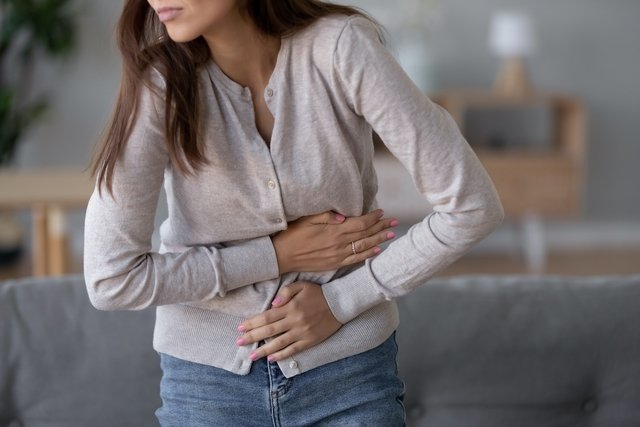Rib pain is not very common, but is normally a result of direct trauma to the chest or ribs that can occur with car accidents or sports injuries (like muay thai, MMA or rugby).
Rib pain may also be a sign of a respiratory problem, or in more serious cases, it can indicate cancer or a heart attack. If you feel very intense pain or if it lasts for over 2 days, then you should seek medical assistance to identify the cause and start appropriate treatment.
The most common causes of rib pain are:

1. Direct trauma
This is most common cause of rib pain and occurs as a result of a fall, car accident or dangerous sports. It is associated with constant rib pain, bruising and difficulty moving the trunk. In most cases, the blow is light and only causes mild muscle injury, but there are situations that can lead to rib fractures.
What to do: You are advised to rest so that the muscles can heal. You can apply cold compresses over the affected area, especially if you have bruising. If the pain is very intense and interferes with breathing or if you suspect a fracture, you should proceed to the hospital to do an X-ray and start treatment.
2. Costochondritis
Costochondritis is another frequent cause of rib pain that is diagnosed when a more specific cause (like direct trauma) does not exist. It occurs due to inflammation in the cartilage that connects the upper ribs to the sternum. It is common to feel sensitivity in between the nipples, especially with palpation of the region.
What to do: In many cases, symptoms improve within 2 or 3 days with just rest or application of a warm compress over the affected area. You may also need to take analgesics or anti-inflammatories, like naproxen or ibuoprofen, ideally has directed by your doctor.
3. Pleurisy
Pleurisy is an inflammatory problem that affects the pleura, the thin layer of tissue that lines the outside of the lungs and the inside of the thoracic cage. In these cases, it is common to feel more intense pain with inhaling, as this is when the lung is full of air and the swollen lining scrapes surrounding organs.
What to do: It is important to go immediately to the hospital to start treatment with IV antibiotics and to relieve inflammation. In addition, you may need to complete respiratory physiotherapy for up to 2 weeks.
4. Fibromyalgia
Fibromyalgia is a type of chronic pain that can affect different parts of the body. It does not have a specific cause and can occur at any age, but is most commonly seen between the ages of 30 and 60. Normally, fibromyalgia pain is identified when other testing does not reveal any other concrete cause for rib pain.
What to do: There is no specific way to treat fibromyalgia, but some approaches to improve quality of life can include acupuncture, physiotherapy or ensuring a diet that is rich in omega 3.
5. Pulmonary embolism
Although a pulmonary embolism is rare, it is a serious situation that occurs when a lung artery becomes obstructed by a clot. It can cause serious injury with symptoms like strong pain with breathing, shortness of breath, rapid breathing, bleeding with coughs and excessive sweating.
What to do: If you suspect a pulmonary embolism, it is important to proceed immediately to the hospital to start appropriate treatment to remove the clot and restore blood flow.
6. Osteoporosis
Osteoporosis is a disease characterized by more fragile bones that are more susceptible to fractures.
Generally, this health condition does not cause pain, however, when the ribs or vertebrae are weakened and a fracture occurs, pain may appear in the area due to nerve compression.
Rib fractures from to osteoporosis can be caused by blows, or even by sneezing or coughing too hard.
What to do: Treatment for osteoporosis should be guided by an orthopedic surgeon, Treamtent includes the use of drugs such as bisphosphonates, hormones, vitamin D and calcium supplements, dietary changes and physical exercise, while fractured bones require more targeted treatment.
7. Lung cancer
Although this is the most rare cause, the appearance of chest pain near the rubs can also be a sign of lung cancer. In these cases, pain is more intense while inhaling. Other symptoms can occur like wheezing, blood with coughing, back pain and weight loss with no apparent cause.
What to do: Treatment for cancer should be started as early as possible to ensure the best chances of a cure. If you suspect cancer, you should consult your doctor immediately.
Read more about what can cause pain specifically under the left rib cage or pain in the sternum.
